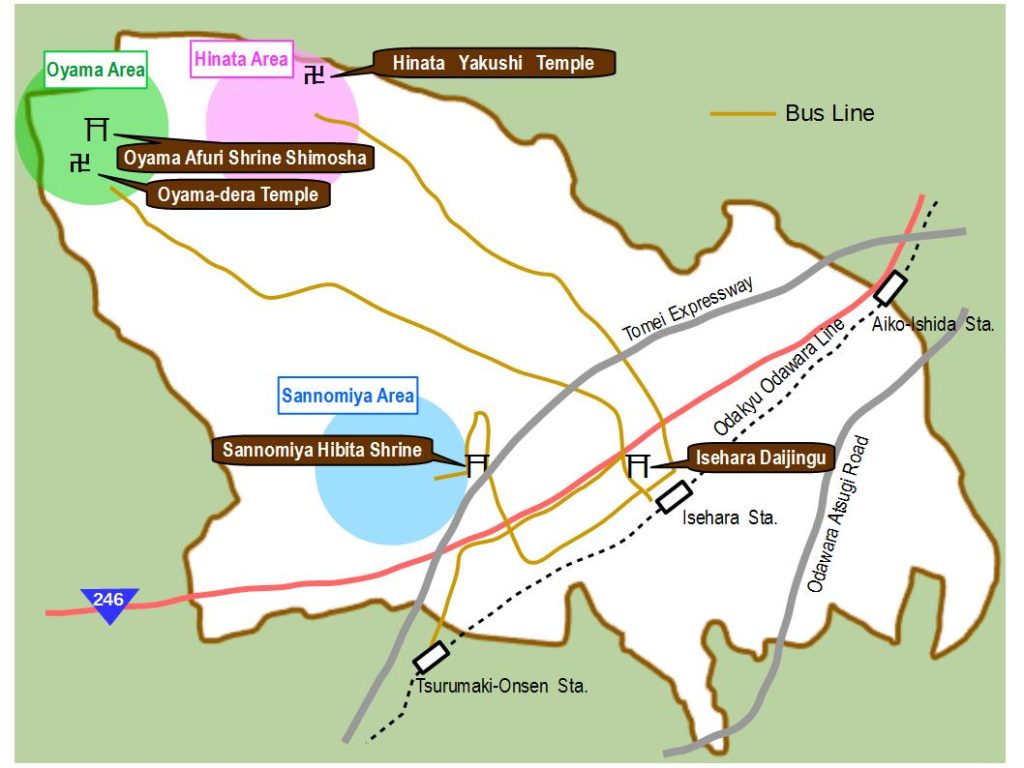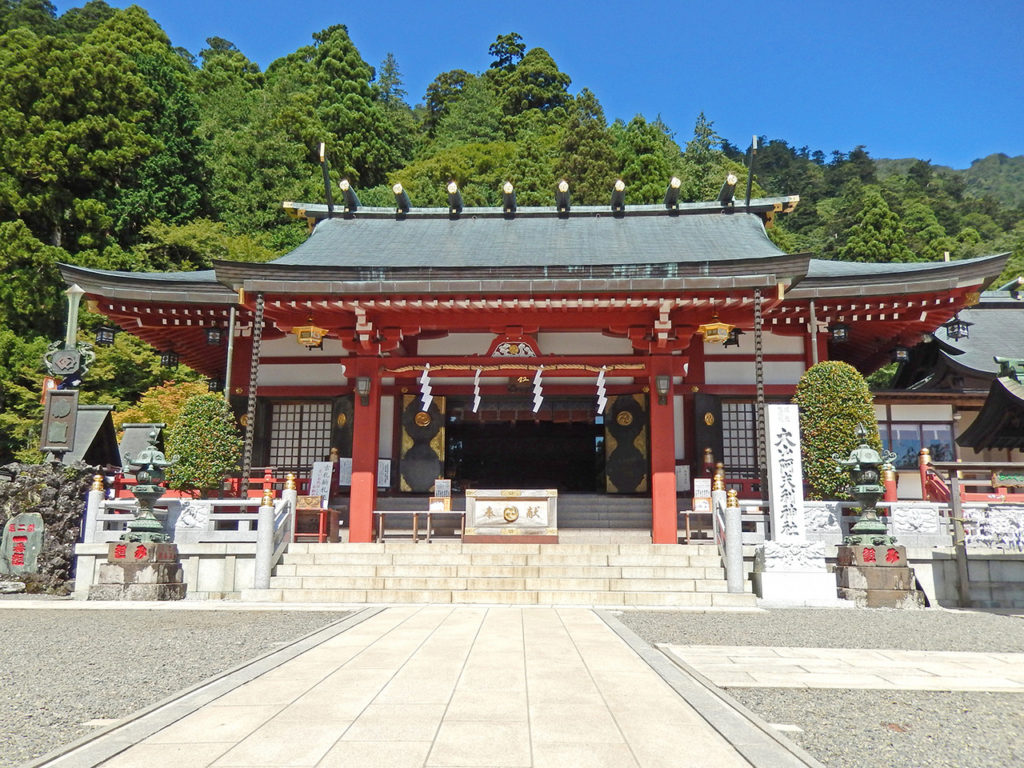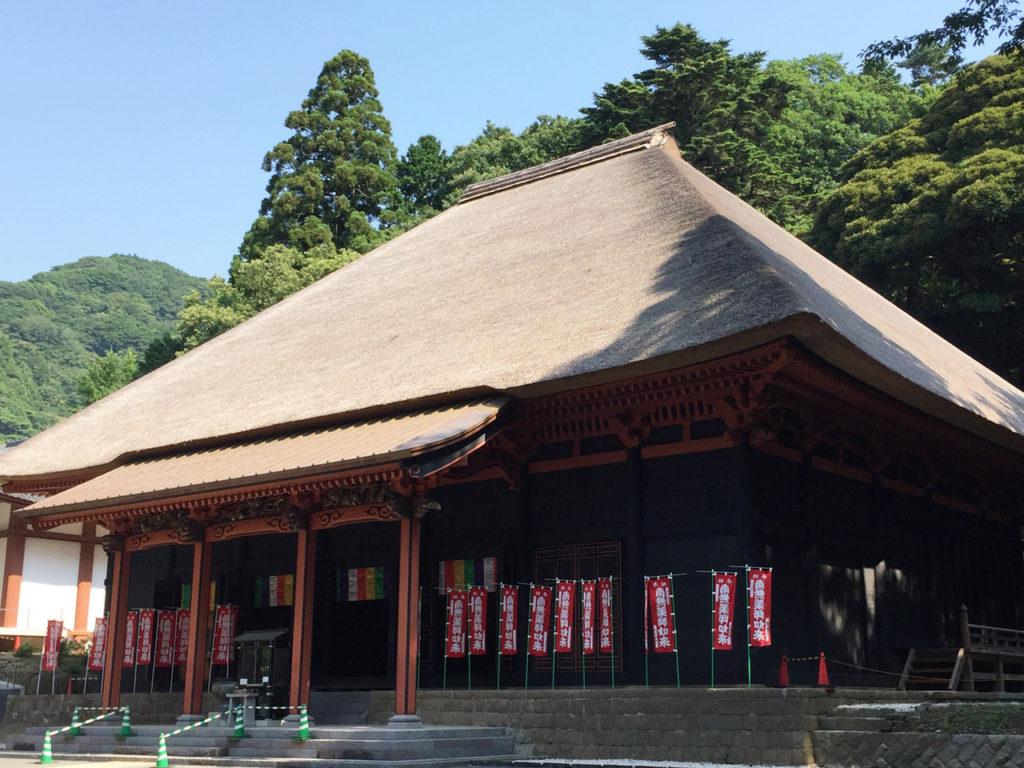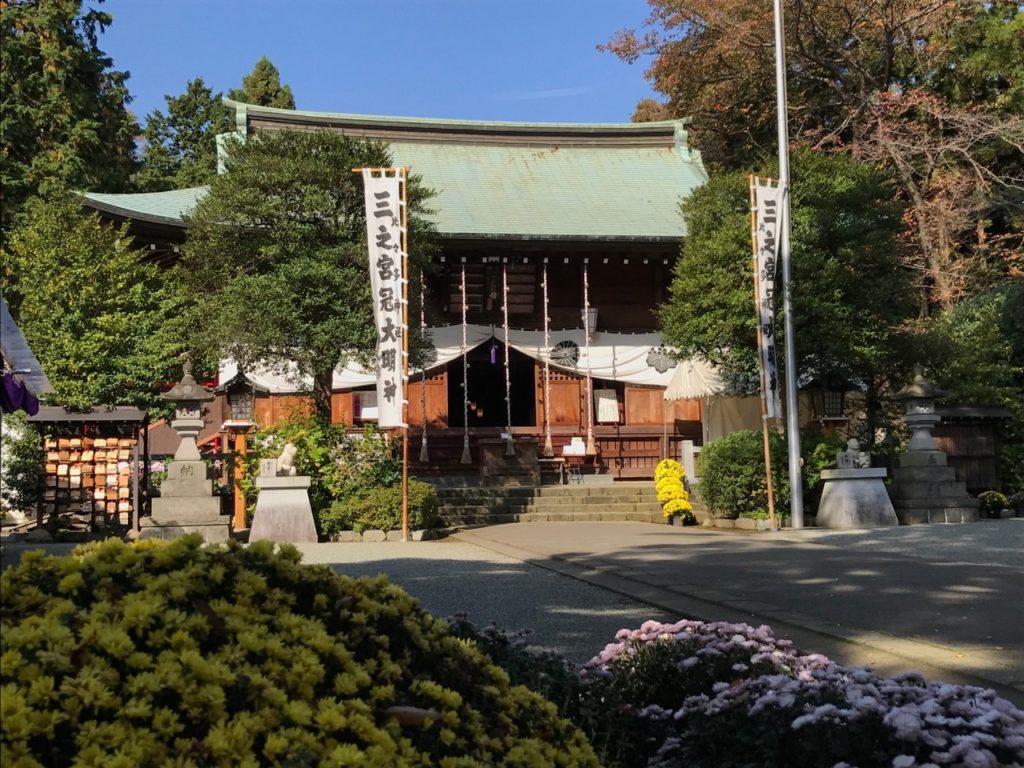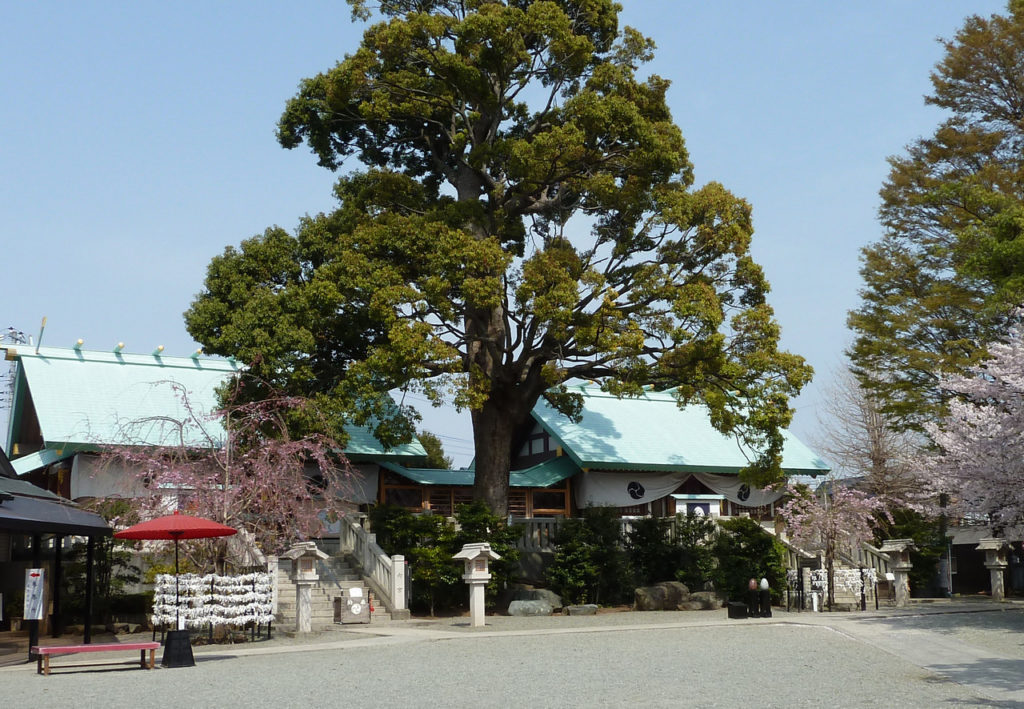Oyama Afuri Jinja (shrine)
The honsha (main shrine) is located at the peek of Mt.Oyama, while the shimosya (lower worship shrine) is located along the slope. Three deities are enshrined at Oyama Afuri: Oyamazumi-no-kami, Ikazuchi-no-kami and Takaokami.
In Japanese mythology, Oyamazumi-no-kami is said to be the father of the goddess Konohanasakuya-hime, who is enshrined on Mt.Fuji. As a result, these two mountains have a history of shared worship, with ascetics traditionally believing a visit to one mountain should be followed by a vislt to the other.
Address:
12 Oyama, Isehara-shi
Tel:
0463-95-2006
Access:
Take a bus at platform No.4 (bounds for Oyama Cable ), from north exit of Isehara station. It takes about 30min to terminus (Oyama Cable). After 15min walk through Koma-sando, take a cable car to Afuri-jinja.
Oyama-dera Temple
Also known as Oyama-no-Ofudosan.
Oyama-dera Temple is one of the Kanto Sandai Fudo (or three great shrines to the guardian deity Fudo). It is also the first pilgrimage site among the 36 Fudo shrines in Kanto.
It is said that Shogun Tokugawa Iemitsu was able to escape an assignation plot involving a false ceiling at Utsunomiya thanks to the divine protectlon of this temple. Kasuga no Tsubone, who is said to have been deeply religious, also visited the temple.
Sightseers often enioy the vibrant autumn tints around the temple gate.
Address:
724 Oyama, Isehara-shi
Tel:
0463-95-2011
Access:
Take a bus at platform No.4 (bounds for Oyama Cable ), from north exit of Isehara station. It takes about 30min to terminus (Oyama Cable). After 15min walk through Koma-sando, take a cable car to Oyama-dera.
Hinata-Yakushi
One of the three great Japanese Yakushi temples.
Hinata-Yakushi has been visited by notable figures such as Minamoto no Yoritorno, Hojo Masako, Lady Minamoto no Sanetomo, Odawara Hojo, Toyotomi Hideyoshi and Tokugawa Ieyasu.
Renovations started on the main pavilion, which was built with a single-layered thatched roof, in 2011 using the same methods employed when it was renovated 270 years ago and were completed in 20i6.
Address:
1644 Hinata, Isehara-shi
Tel:
0463-95-1416
Access:
Take a bus at platform No.3 (bounds for Hinata-yakushi ), from north exit of Isehara station. It takes about 20min to terminus (Hinata-yakushi bus stop). And 15min walk to Hinata-yakushi.
Sannomiya hibita Jinja (shrine)
It is not known for sure what year this shrine dates to, but both the national creator deity Toyokumunu no Mikoto and the Sakatokino Kami (god of sake) are enshrined here. As a result, the shrine counts many brewers and distillers among its devotees. The attached folk museum features many cultual treasures.
Address:
1472 Sannomiya, Isehara-shi
Tel:
0463-95-3237
Access:
Take a bus at platform No.1 (bounds for Kuribara via Seki-dai ), from north exit of Isehara station. It takes about 15min to Hibita-jinja bus stop.
Take a bus at platform No.1 (bounds for Tsurumaki-onsen Station via Osumi-dai ), from north exit of Isehara station. It takes about 12min to Godo bus stop. And 12min walk to Sannomiya-Hibita shrine.
Isehara-daijingu
This shrine is highly revered by many people, because it is located in city center close to station. Once upon a time, people, who lived here, received the grand shrine of Ise as the guardian god of this place. It is said that this is the origin of this city’s name “Isehara”.
Address:
3-8-1 Isehara, Isehara-shi
Tel:
0463-96-1611
Access:
10min walk from north exit of Isehara Station.

